The electric vehicle revolution is charging forward, and two prominent contenders, the BMW iX3 and the VW Tiguan, are at the forefront of this transformation in the automotive segment. While both vehicles fall under the popular SUV category, they represent two distinct philosophies in terms of powertrain, technology, and user experience. This article delves into a side-by-side comparison of the BMW iX3 and VW Tiguan, providing insights into their technical aspects and innovations.
BMW iX3 vs VW Tiguan – Erot ja hinnat vertailussa
Molemmilla malleilla on vahvuutensa – mutta kumpi sopii sinulle paremmin?
Vertaa suorituskykyä, kulutusta, hintaa ja tiloja suoraan: BMW iX3 vai VW Tiguan?
Powertrain and Performance
Starting with the engines, the BMW iX3 showcases an all-electric configuration that delivers a robust 286 horsepower (HP) through a rear-wheel-drive system. It boasts impressive torque of 400 Nm, enabling a swift acceleration from 0 to 100 km/h in just 6.8 seconds. With a top speed of 180 km/h and an electric range of 471 km on a single charge, the iX3 is not just designed for city driving but also for longer journeys, with a consumption rate of 17.6 kWh/100 km.
In contrast, the VW Tiguan offers a diverse range of engine options. From petrol to diesel and hybrid variants, the Tiguan's power ranges from a modest 130 HP to a formidable 272 HP in its high-performance trims. The Tiguan is equipped with either front-wheel drive or all-wheel drive, catering to different driving preferences and conditions. Moreover, its fuel consumption varies significantly depending on the engine choice, with the most economical being the plugin hybrid that achieves a mere 0.4 L/100 km while providing an electric range of up to 113 km.
Interior and Space
Interior comfort and practicality are pivotal when selecting an SUV. The BMW iX3 provides seating for five passengers with a spacious trunk capacity of 510 liters. The interior is characterized by BMW's luxury aesthetic, complete with high-quality materials and an intuitive infotainment system that supports the latest in connectivity and technological innovation.
The VW Tiguan, on the other hand, offers slightly more cargo space, with a trunk capacity of 652 liters. Its interior layout is versatile and practical, designed with a focus on user-friendliness. The Tiguan’s infotainment system also comes equipped with a wide array of technology and connectivity options, ensuring that both drivers and passengers are connected and entertained during their journeys.
Technological Innovations
Both the BMW iX3 and VW Tiguan showcase advanced technology, but they reflect different philosophies. The iX3 comes with a range of cutting-edge features, including advanced driver assistance systems and a digital cockpit, enhancing the driving experience while prioritizing safety. BMW's typical driving dynamics are further augmented by innovations like adaptive cruise control and a comprehensive suite of connectivity features.
Meanwhile, the VW Tiguan emphasizes a more holistic approach to technology, offering features like a customizable digital dashboard and various driver assistance systems that adapt to the user's preferences. Additionally, the Tiguan's hybrid models are equipped with regenerative braking systems that capture energy while driving, further enhancing efficiency.
Environmental Impact
With the increasing focus on sustainable mobility, the environmental impact of vehicles has become a crucial consideration for many buyers. The BMW iX3 stands out with zero tailpipe emissions, achieving a CO2 efficiency class rating of A, making it an excellent choice for the eco-conscious consumer.
In contrast, the VW Tiguan offers a mixed bag, with CO2 emissions ranging significantly based on the engine type. The petrol and diesel variants can produce emissions as high as 193 g/km, whereas the mild-hybrid and plugin hybrid versions perform far more efficiently, achieving emissions as low as 8 g/km. This variability allows consumers to choose an engine that aligns with their environmental values.
Conclusion
In summary, both the BMW iX3 and VW Tiguan offer unique benefits that cater to different segments of the SUV market. The iX3 is a stronger contender for those seeking an electric-only experience with luxury and performance, while the Tiguan excels in versatility, offering a variety of powertrain options and a more extensive cargo capacity. Ultimately, the choice will depend on individual priorities, whether they lean more towards sustainability, performance, or practicality.
Tässä mennään yksityiskohtiin: tekniset erot tarkemmin
Kustannukset ja kulutus
Hinta ja kulutus ovat tärkeimpiä ostopäätökseen vaikuttavia tekijöitä – ja juuri täällä erot usein korostuvat.
VW Tiguan on hinnassa ratkaiseva edullisempi – sen lähtöhinta on 38300 €, kun taas BMW iX3 maksaa 68900 €. Ero on noin 30650 €.
Toimintamatkassa BMW iX3 suoriutuu selvä paremmin: se yltää jopa 805 km:een, noin 676 km enemmän kuin VW Tiguan.
Moottori ja suorituskyky
Teho, vääntömomentti ja kiihtyvyys ovat autoharrastajien klassisia mittareita – ja erot tulevat tässä hyvin esiin.
Moottoritehossa BMW iX3 on selvä etulyöntiasemassa – 469 hv verrattuna 272 hv:een. Ero on noin 197 hv hv.
Kiihdytyksessä 0–100 km/h BMW iX3 on selvästi havaittava nopeampi – se saavuttaa 100 km/h ajassa 4.90 s, kun taas VW Tiguan tarvitsee 5.90 s. Ero on noin 1 s sekuntia.
Huippunopeudessa VW Tiguan on pienessä määrin edellä – se yltää 242 km/h:een, kun taas BMW iX3 saavuttaa 210 km/h. Ero on noin 32 km/h.
Myös vääntömomentissa näkyy ero: BMW iX3 vetää huomattava voimakkaammin, 645 Nm verrattuna 400 Nm:een. Eroa on noin 245 Nm.
Tila ja käytännöllisyys
Tehon ohella arjessa ratkaisevat mukavuus ja käytännöllisyys. Tässä selviää, kumpi auto on monipuolisempi ja tilavampi.
Molemmissa autoissa on tilaa 5 henkilölle.
Omapainossa VW Tiguan on selvä kevyempi – 1599 kg verrattuna 2360 kg:een. Painoero on noin 761 kg.
Tavaratilan koossa VW Tiguan tarjoaa huomattava enemmän – 652 L verrattuna 520 L:een. Ero on noin 132 L.
Maksimikantavuudessa BMW iX3 pärjää kevyt paremmin – jopa 1750 L, noin 100 L enemmän kuin VW Tiguan.
Kantavuudessa VW Tiguan on vähän parempi – 533 kg verrattuna 465 kg:een. Ero on noin 68 kg.
Kuka voittaa vertailun?
BMW iX3 osoittautuu olevan on ylivoimainen ja saa siksi tittelin DriveDuel Champion!
Tässä vertailussa BMW iX3 on monipuolisempi kokonaisuus.
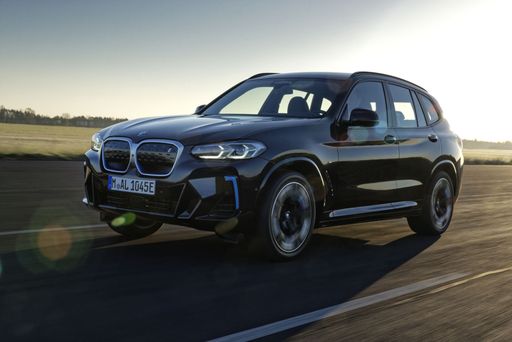
BMW iX3
BMW iX3
BMW iX3 on rauhallinen ja käytännöllinen sähköinen katumaasturi, joka yhdistää BMW:n ajettavuuden ja sähköauton hiljaisuuden luontevaksi paketiksi. Sisätilat tarjoavat hillittyä luksusta ja arjen toimivuutta, joten se on oivallinen valinta ostajalle joka haluaa mukavaa sähköajoa ilman turhaa prameilua — laturin metsästys kaupungissa voi tosin tuoda pienen seikkailun mukaan.
Tiedot @ press.bmwgroup.com
@ press.bmwgroup.com
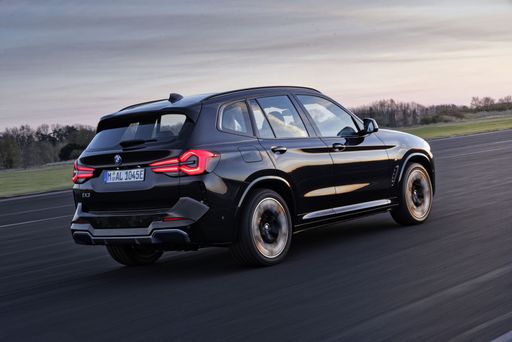 @ press.bmwgroup.com
@ press.bmwgroup.com
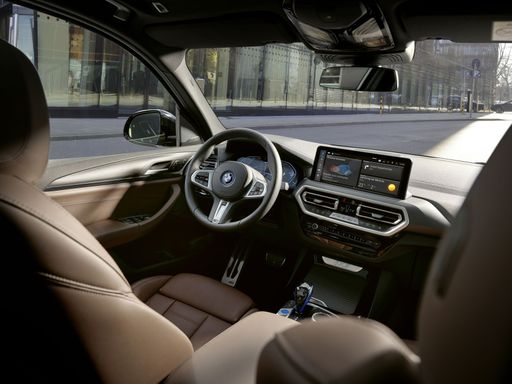 @ press.bmwgroup.com
@ press.bmwgroup.com
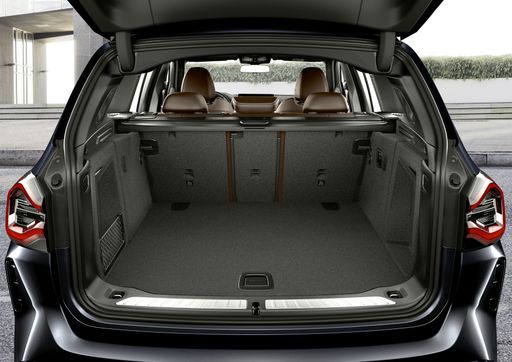 @ press.bmwgroup.com
@ press.bmwgroup.com
VW Tiguan
Tiguan on käytännöllinen ja hillitty katumaasturi, joka kääntää arjen matkustamisen mukavaksi ja toimivaksi paketiksi. Sisätila on järkevästi suunniteltu, ajettavuus luotettavaa eikä se yritä esittää mitään ylimielistä — fiksu valinta ostajalle, joka arvostaa arjen helppoutta ja laatua.
Tiedot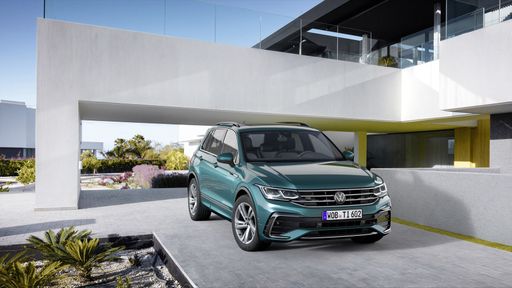 @ Volkswagen
@ Volkswagen
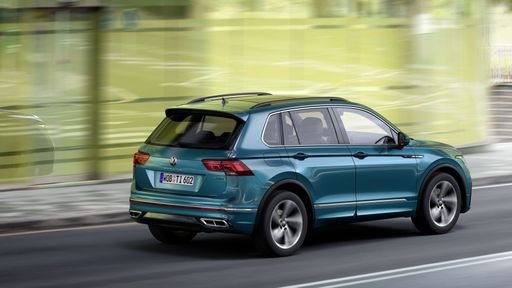 @ Volkswagen
@ Volkswagen
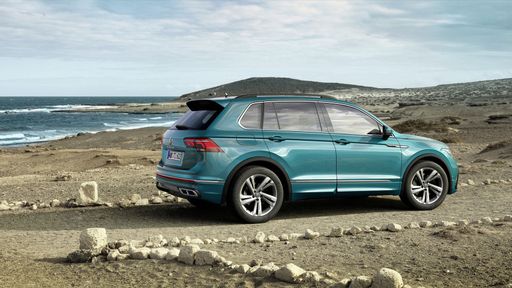 @ Volkswagen
@ Volkswagen
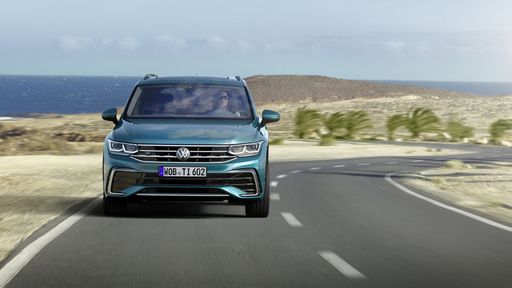 @ Volkswagen
@ Volkswagen
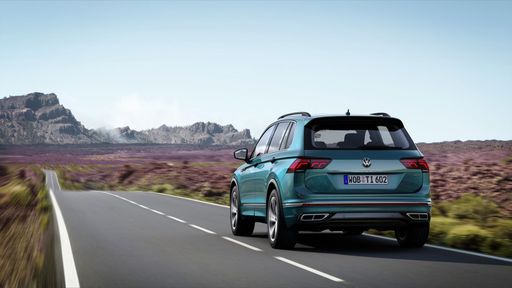 @ Volkswagen
@ Volkswagen
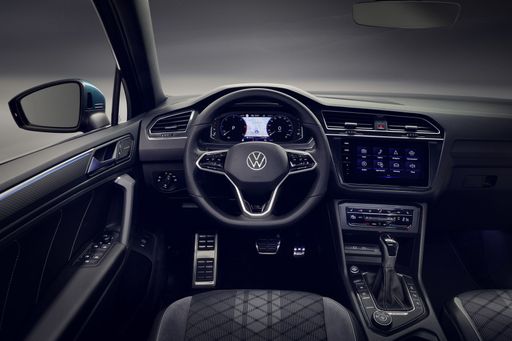 @ Volkswagen
@ Volkswagen

|

|
|
|
|
Kustannukset ja kulutus |
|
|---|---|
|
Hinta
68900 - 75400 €
|
Hinta
38300 - 60500 €
|
|
Kulutus L/100km
-
|
Kulutus L/100km
0.4 - 8.4 L
|
|
Kulutus kWh/100km
15.10 kWh
|
Kulutus kWh/100km
-
|
|
Sähköinen toimintasäde
805 km
|
Sähköinen toimintasäde
119 - 129 km
|
|
Akun kapasiteetti
108.70 kWh
|
Akun kapasiteetti
19.70 kWh
|
|
CO2
0 g/km
|
CO2
8 - 190 g/km
|
|
Polttoainesäiliön tilavuus
-
|
Polttoainesäiliön tilavuus
45 - 58 L
|
Mitat ja kori |
|
|---|---|
|
Kori
SUV
|
Kori
SUV
|
|
Istuimet
5
|
Istuimet
5
|
|
Ovet
5
|
Ovet
5
|
|
Omamassa
2360 kg
|
Omamassa
1599 - 1890 kg
|
|
Tavaratila
520 L
|
Tavaratila
490 - 652 L
|
|
Pituus
4782 mm
|
Pituus
4539 mm
|
|
Leveys
1895 mm
|
Leveys
1842 - 1859 mm
|
|
Korkeus
1635 mm
|
Korkeus
1656 - 1658 mm
|
|
Maksimi tavaratila
1750 L
|
Maksimi tavaratila
1486 - 1650 L
|
|
Kantavuus
465 kg
|
Kantavuus
460 - 533 kg
|
Moottori ja suorituskyky |
|
|---|---|
|
Moottorityyppi
Sähkö
|
Moottorityyppi
Plug-in hybridi, Bensiini, Bensiini MHEV, Diesel
|
|
Vaihteisto
Automaatti
|
Vaihteisto
Automaatti
|
|
Vaihteiston tyyppi
Alennusvaihteisto
|
Vaihteiston tyyppi
Kaksoiskytkin automaatti
|
|
Vetotapa
Neliveto
|
Vetotapa
Etuveto, Neliveto
|
|
Teho hv
469 hv
|
Teho hv
130 - 272 hv
|
|
Kiihtyvyys 0-100 km/h
4.90 s
|
Kiihtyvyys 0-100 km/h
5.9 - 10.6 s
|
|
Huippunopeus
210 km/h
|
Huippunopeus
198 - 242 km/h
|
|
Vääntömomentti
645 Nm
|
Vääntömomentti
220 - 400 Nm
|
|
Sylinterien lukumäärä
-
|
Sylinterien lukumäärä
4
|
|
Teho kW
345 kW
|
Teho kW
96 - 200 kW
|
|
Iskutilavuus
-
|
Iskutilavuus
1498 - 1984 cm3
|
Yleiset |
|
|---|---|
|
Mallivuosi
2026
|
Mallivuosi
2024 - 2025
|
|
CO2-tehokkuusluokka
A
|
CO2-tehokkuusluokka
B, G, D, E, F
|
|
Merkki
BMW
|
Merkki
VW
|
Millaisia voimalinjoja BMW iX3:ssa on saatavilla?
BMW iX3 on saatavilla Neliveto-vetotavalla.
Näytetyt hinnat ja tiedot ovat arvioita, jotka perustuvat Saksan listahintoihin, ja voivat vaihdella maittain. Nämä tiedot eivät ole oikeudellisesti sitovia.
